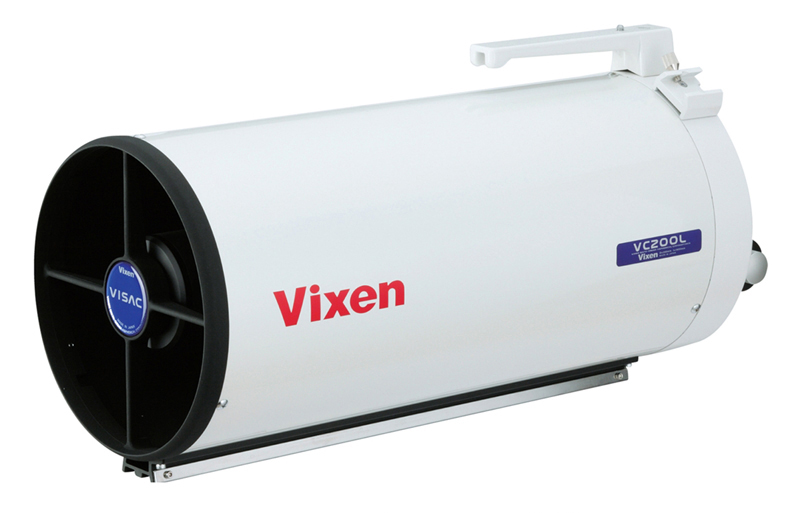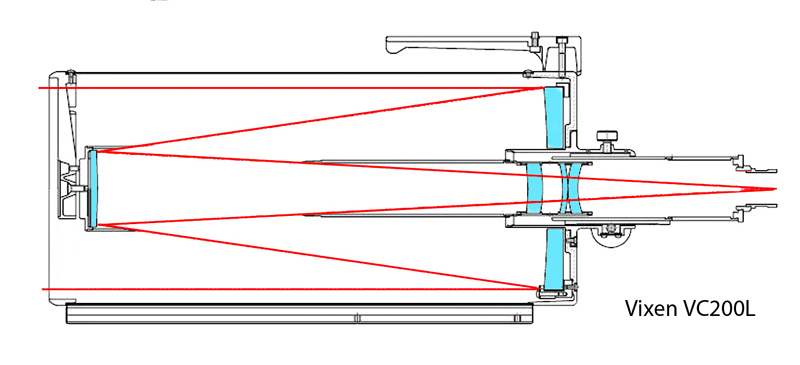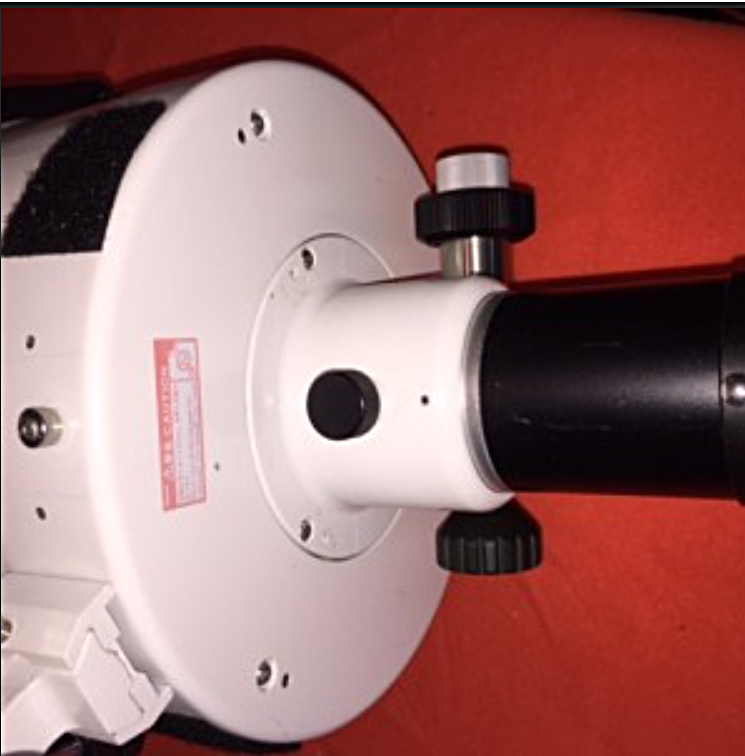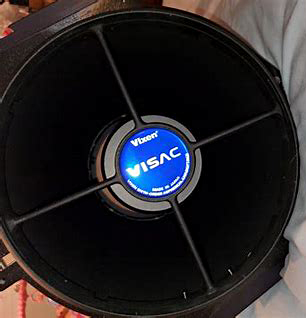APRIL 2023
The Vixen VC200L
Many astroimagers will acquire an 8 inch catadioptric telescope (using both mirrors and lenses) with a focal length of ~2,000 mm to observe and image the Moon, Planets and smaller deep sky objects. The three most commonly bought optical tube assemblies are:
The Meade LX65 8-inch ACF (Advanced Coma Free) OTA costing ~£1,500 (but sometimes on offer for £1,127 from Meade UK). This new design eliminates coma towards the edge of the field by using an aspheric corrector plate and hyperbolic secondary mirror.
The Celestron Celestron C8 XLT Optical Tube Assembly costing~£1,299 is the original SCT design and will suffer from coma towards the edgeof a wide field.
Celestron EdgeHD 800 Optical Tube Assembly costing ~£1,900. This new design incorporates optical elements within the baffle tube to give a wide, aberration free, flat field – so can also be called an astrograph which is ideal for astroimaging.
This article is to showcase an interesting alternative design, which, like the Celestron Edge HD, also uses optical elements in the baffle tube to give a wide, aberration free, field of view – the Vixen VC200L OTA which I have used for many years with great success. It costs ~£1,538 so significantly less expensive than the EdgeHD. (Vixen is a highly regarded Japanese company.)

The Optical design
The optical design is unique. It features a high precision sixth order aspherical primary mirror, a convex secondary mirror along with a triplet lens mounted within the baffle tube. In combination, these optical elements form Vixen’s VISAC (Vixen Sixth-Order Aspherical Cassegrain) design. There are two advantages from using this internal corrector lens system; firstly, there is no full aperture corrector plate to dew up as in standard Schmidt-Cassegrains and secondly, it gives an open tube assembly so cool down times are considerably less. It does, however, mean that the primary mirror can collect dust though I have not found this to be a problem. The primary mirror’s aspherical shape is produced by controlling the depth of the mirror’ reflective coating so, should it ever need ‘re-silvering’ it would need to go back to Japan.

[“Vixen has created a unique aluminum vacuumevaporation system to produce extremely precise mirror surfaces. More accuratethan the error-prone process of grinding material to form a mirror surface.Vixen’s revolutionary system works by controlled layering of aluminum film. Theprimary mirror of the “popular” 200mm newtonian R200SS and the unique6th-order aspheric Cassegrain primary mirror of the VC200L are produced withthis aluminum vacuum evaporation system”.]
Rack and Pinion Focuser
The Vixen primary mirror is fixed and focussing is done using a duel speed rack and pinion focuser at the rear of the tube assembly. This has two advantages over a SCT as there will be no image shift when focusing nor any ‘mirror flop’ when, for example, the mount performs a meridian flip. [ I have equipped my 9.25 inch Celestron with an additional Starlight instruments focuser which eliminates image shift but not mirror flop – but, pleasingly, my mount does not do meridian flips.]

The secondary mirrorassembly.
This is mounted on a very rigid, cast metal, four vanespider – the arms being quite thick. This has the advantage that collimation isheld well and rarely required and I have never had to collimate mine. Thedisadvantage is that brighter stars can become a ‘bit blocky’ but this can befixed in post processing.
